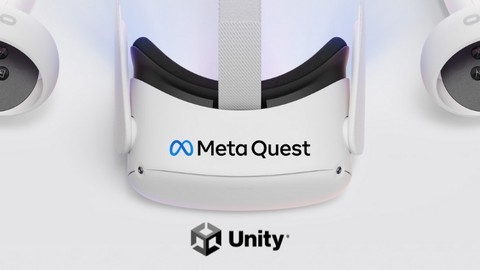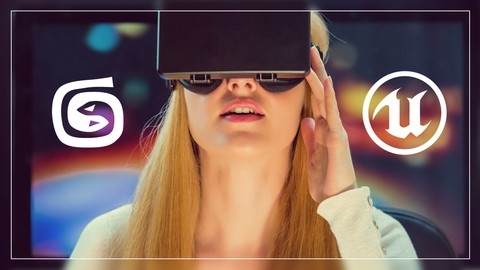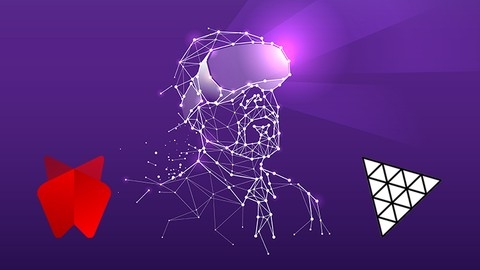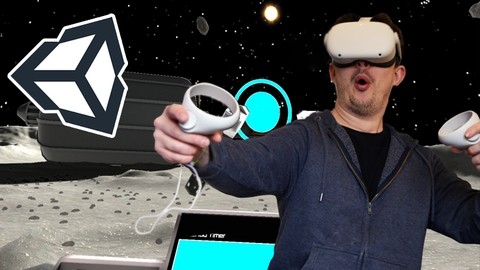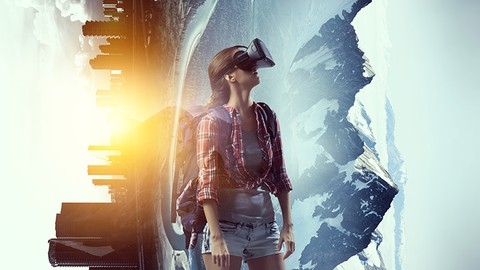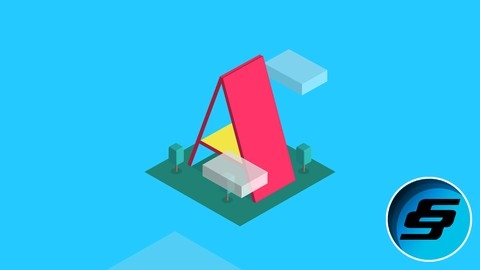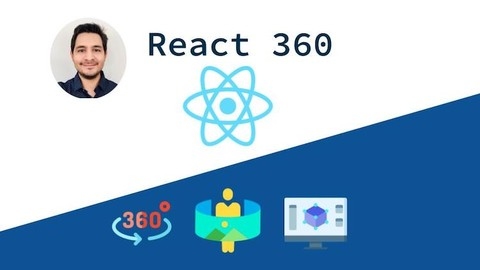Virtual Reality (VR) is rapidly transforming the technological landscape, offering immersive experiences in gaming, education, healthcare, and beyond.
Learning VR development empowers you to create engaging and interactive virtual worlds, opening doors to exciting career opportunities and innovative projects.
Whether you aspire to build the next hit VR game or develop groundbreaking applications, understanding VR development is a crucial step towards shaping the future of technology.
However, with the abundance of VR courses available online, finding the perfect one to launch your VR development journey can feel overwhelming.
You need a course that provides a solid foundation, hands-on experience, and guidance from experienced instructors.
You want to ensure you’re investing your time and energy in a course that will equip you with the skills and knowledge needed to succeed in this exciting field.
Based on our in-depth analysis of numerous VR courses on Udemy, we’ve identified VR Development Fundamentals With Meta Quest 2 And Unity as the best course overall.
This comprehensive course provides a solid foundation in VR development using the popular Unity game engine and the Meta Quest 2 headset.
It covers everything from setting up your development environment to creating interactive experiences, making it an ideal choice for both beginners and those with some prior experience.
While VR Development Fundamentals With Meta Quest 2 And Unity is our top pick, Udemy offers a variety of other excellent VR courses catering to different learning styles and areas of interest.
Keep reading to discover more recommendations and find the perfect course to embark on your VR development adventure.
VR Development Fundamentals With Meta Quest 2 And Unity
This course teaches you how to create immersive VR experiences using Unity and Meta Quest 2.
You begin with the fundamentals, learning how to set up your Unity projects, import pre-built assets like the Quidditch game elements, and create your very first VR project using the XR Interaction Toolkit.
You then discover the secrets of building specifically for Meta Quest, including setting up your project for seamless building and understanding the intricacies of Meta Quest Link and OpenXR.
You then dive into the world of VR interactions.
You learn how to implement both continuous movement and teleportation, allowing you to traverse your virtual worlds with ease.
You also master the art of crafting intuitive user interfaces, ensuring a user-friendly experience.
The course further enhances your skills by guiding you through integrating full-body VR using Ready Player Me and Final IK.
This allows you to create a personalized avatar that mirrors your movements, adding a new layer of realism to your VR experiences.
The course then takes you deeper into the world of Oculus development.
You discover how to utilize the Oculus Integration package, harness the power of the OVRCameraRig to set up your scenes, and learn the essential skills of building your project specifically for Oculus Quest devices.
You also uncover the secrets of installing your VR creations onto your Quest using both ADB and SideQuest, giving you a comprehensive understanding of the development pipeline.
You learn to implement a local VR player, complete with movement using the joystick, and delve into the intricacies of Oculus Avatar setup, including the customization of hands.
You even explore advanced techniques like teleportation, grabbing objects, summoning objects from a distance, and creating compelling UI interactions specifically for VR.
Finally, you put your knowledge to the test by building an exciting Sword and Pistol VR game.
You learn the art of designing VR-specific elements, like pushable buttons, and master the technique of loading new scenes seamlessly within your VR experience.
The course culminates with you adding the finishing touches to your game, including immersive sound effects and satisfying controller vibrations, resulting in a polished and engaging VR experience.
Multiplayer Virtual Reality (VR) Development With Unity
This course takes you on a journey from the fundamentals of VR development to the complexities of building multiplayer VR experiences.
You begin by setting up your development environment, installing Unity, and configuring your project for the Oculus Quest 2.
You quickly delve into using the Unity XR Interaction Toolkit, your essential toolset for building immersive VR experiences.
You explore the foundations of VR development, mastering techniques like implementing VR avatars, continuous movement, teleportation, and object grabbing within virtual environments.
You’ll learn to design intuitive VR UI interactions, ensuring your applications are user-friendly and engaging.
The course then introduces the power of Photon Unity Networking 2 (PUN 2), teaching you how to create robust network infrastructures for your VR games.
You learn to connect to Photon servers, implement secure login systems, and even integrate VR keyboards for seamless user input.
You will create virtual rooms based on map selections, enabling players to join specific environments, and discover how to synchronize scenes across the network.
You even learn to implement networked grabbing mechanics and avatar synchronization, creating truly interactive and realistic multiplayer experiences.
To top it off, you will integrate Photon Voice 2, adding voice chat functionality for natural and realistic communication within your VR worlds.
Unreal Engine 4: Project Based VR Course for Arch Viz in UE4
In this course, you start with the fundamentals of 3D modeling in 3ds Max, specifically tailored for real-time rendering in Unreal Engine 4.
You learn how to optimize your models and prepare them for export in the FBX format, a universal format for 3D assets.
Don’t worry if you don’t have existing models, as the instructor provides assets for practice.
You then transition into Unreal Engine 4, where you learn the essentials of navigating the interface, setting up projects, and importing your 3ds Max creations.
The course meticulously guides you through identifying and resolving common import issues.
You also gain an understanding of collisions, a crucial concept for ensuring realistic object interaction within your virtual environments.
You delve into the world of materials and lighting, mastering the art of crafting realistic surfaces and illuminating your scenes.
You learn techniques for creating materials, such as mirror reflections, and dive deep into Unreal Engine 4’s lighting system, mastering lightmass settings and post-processing effects for achieving photorealism.
The course thoroughly explains the theory behind lighting in the context of architectural visualization, equipping you with the knowledge to create stunningly realistic results.
This course doesn’t just stop at static scenes.
You journey further into the realm of virtual reality, where you discover the power of Unreal Engine 4’s VR template for creating immersive experiences for popular headsets like the HTC Vive and Oculus Rift.
You explore the process of converting existing projects into VR experiences and gain hands-on experience testing and refining your VR creations.
You learn how to implement interactive elements, like turning lights on and off or dynamically changing materials in real time, using Unreal Engine 4’s visual scripting system, Blueprints.
Finally, you’ll uncover Datasmith, a powerful tool that streamlines the workflow between 3ds Max and Unreal Engine 4, enabling you to effortlessly import complex scenes and models, including those from software like SketchUp, while achieving a photorealistic look.
Learn to create WebXR, VR and AR, experiences using Three.JS
In this course you will dive deep into the world of immersive web experiences, gaining the skills to create your own virtual worlds and augmented reality applications.
The course begins by guiding you through setting up your development environment and understanding the fundamentals of Three.js.
You will learn how to create 3D objects, add textures and materials, and bring them to life with animations.
You will discover how to incorporate physics into your virtual environments, allowing objects to interact realistically.
As you progress, you will explore the world of WebXR, the technology that powers VR and AR experiences on the web.
You will learn how to convert your THREE.js projects into VR applications, enabling users to step inside and interact with your creations using VR headsets like the Oculus Quest.
You will discover how to use controllers to manipulate objects and navigate virtual spaces.
You will even learn how to develop AR experiences, overlaying digital content onto the real world through your phone’s camera.
Learn Unity Games Engine & C# By Creating A VR Space Shooter
This course guides you through building a VR space shooter game from scratch using the Unity game engine and C# programming.
You begin by installing Unity Hub and Unity Engine before diving into the Unity User Interface.
You configure Unity for XR (cross-reality) development, focusing on Android, the platform for popular VR headsets like Oculus Quest.
Your first task is creating an XR Camera rig, which defines your viewpoint in the virtual world.
This is where you start to see your game come to life.
The course then takes you through building your game world.
You learn to import 3D models, including VR hands for immersive interactions, and build a moon base environment.
You master lighting techniques, adding realistic reflections and incorporating the Earth and Sun into your space scene.
To challenge the player, you create an asteroid field by spawning and animating asteroids using C#.
You then breathe life into your game using C# programming.
You build a laser gun, write code to fire lasers using raycasting, and program the asteroids to move and get destroyed upon collision.
You learn to create a timer, a score system to track the player’s progress, and a game controller to manage the game’s logic.
The course covers important concepts like game loops, start menus, and game over screens, providing a solid foundation in game development.
You also discover advanced techniques like post-processing to enhance the game’s visuals and incorporate music to create a more immersive atmosphere.
To ensure your game runs smoothly on VR headsets, you explore optimization techniques like texture optimization and occlusion culling.
You even learn how to add haptic feedback to your laser guns for a more realistic feel.
Finally, the course guides you on how to build your game and introduces you to platforms like Sidequest for distributing your finished VR experience.
360 Panoramic Photography for VR and Oculus-BEGINNING
This course arms you with the skills to craft captivating VR experiences, particularly for Oculus headsets.
You’ll begin by mastering the fundamentals of professional equipment, including cameras and essential software like Photomatix Pro and Photoshop.
The course then guides you through crucial techniques such as camera settings and metering to ensure you capture high-quality images.
You’ll then dive into the heart of panoramic photography, exploring various shooting methods, from using a tripod to handheld techniques.
You’ll master the art of processing these images and stitching them together, creating seamless panoramic views.
Once you’ve created stunning visuals, you’ll learn how to share them with the world.
The course covers publishing on platforms like Google Maps and Kuula, allowing you to showcase your work to a wide audience on different devices – web browsers, smartphones, and VR headsets.
Taking it a step further, you’ll discover how to craft immersive tours by connecting multiple panoramas and enriching them with interactive elements.
Think pop-ups with additional information, video overlays, and audio integration – all these elements combine to create a truly engaging VR experience.
You’ll also explore the exciting realm of Web XR, a technology that allows you to build interactive experiences specifically for VR headsets like the Oculus Quest 2.
The course even touches upon using programs like handBrake and Foldio Studio for tasks like video editing and 3D object creation, adding another layer of depth to your VR projects.
A-Frame Web VR Programming Tutorial Series (Virtual Reality)
This A-Frame Web VR course teaches you to build virtual reality experiences right in your web browser.
You begin with the basics of A-Frame, a JavaScript library that makes VR development easy.
You quickly dive into creating 3D scenes, drawing shapes, and learning how to manipulate them with textures and animations.
The course then guides you through making these objects interactive.
You learn how to add lighting and realistic shadows, and to create immersive environments with skyboxes.
You even learn how to import models from platforms like Sketchfab, Free3D, cg-trader, Clara.io, TurboSquid, and the Unity3D Asset Store.
You discover how to use images and videos, including 360-degree content, to enrich your VR creations.
The course dives into advanced techniques like curved images, video spheres, and object loading, giving you a wide range of tools to craft engaging experiences.
You are also pointed toward additional resources about designing for VR, including articles on user experience and the philosophical implications of this technology.
Creating VR Experiences with React 360
This course walks you through setting up your development environment, so you can see your VR app on your computer and phone.
You will build six VR projects.
Your first project is building an app called HouseTourVR.
This teaches you the basics: adding background images, using VrButton components to make things interactive, and making the experience dynamic with state changes.
Don’t worry; the course doesn’t throw you right into the deep end.
You will learn about ‘Store,’ which helps you manage data in your app.
You will also build a landing page, so users have a smooth experience from the moment they open your app.
And yes, you even learn to add audio!
The course then steps up the difficulty.
You will learn to create custom components using something called ‘NativeModule.’
You can even dynamically change the size and shape of 3D objects!
Imagine the possibilities.
If you’ve ever wanted to pull real-time data from somewhere else, this course teaches you that too!
You will learn to use ‘fetch’ to get data and ‘Postman’ to test APIs.
The course also dives into 3D geometry.
You learn to work with different shapes like spheres, cylinders, and planes to create immersive worlds.
If that’s not enough, the course shows you how to use animation to make your VR experiences even more engaging.
You’ll have built a portfolio of VR projects that you can show off to potential employers.
Also check our posts on:
